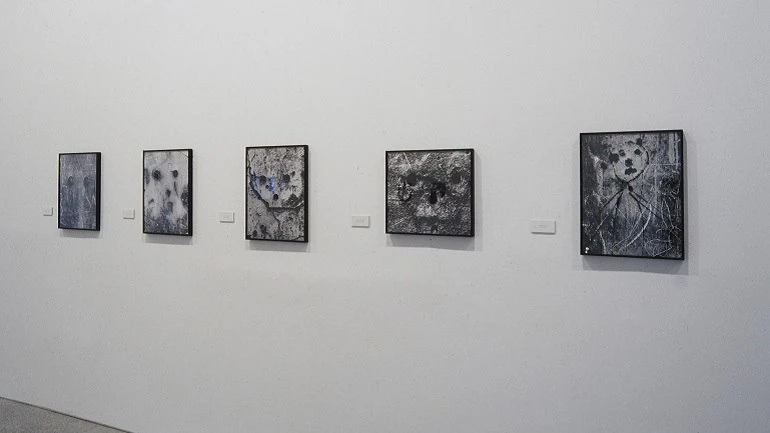Brassaï. From Surrealism to the Informal

The one hundred and thirty photographs comprising the exhibition enable the different characteristics of his work to be traced, portraying its themes, style and poetry. The exhibit explores two avenues; one is Brassaï's role in shaping Surrealist imagery, particularly through his photographic essays published in the magazine Minotaure, and the other is the emphasis on the artist's formulation of urban night-time landscapes. Interestingly, even though Brassaï's street scenes are often nocturnal, he does not depict the depraved scenes of the night, but instead concentrates on what is suggested and the incessant repetition of desire. This thematic pattern and the photographic viewpoint and approach can be seen in the series Paris de nuit (1932).
In parallel, Brassaï develops his graffiti series, where his interest in mural languages transpires, expressed in the form of anonymous coral carvings whose creative processes is akin to “exquisite corpses” and the automatic writings promulgated by André Breton and Pierre Reverdy. The influence of Brassaï's graffiti pieces reaches as far as Informalism of the Forties and Fifties as they are considered statements that question the authority of art by many artists. The exhibition also includes the series Transmutations (links to Works/Authors) that represents Brassaï's most experimental side, somewhere between etchings and photography, that are created by scratching the image onto a glass plate.
Brassaï's work explores diverse themes, for instance nudity, redefined objects - as they are shot close-up - involuntary sculptures, artist portraits, prostitutes, market workers, the Paris streets and gardens, etc. Running through all of his work is the highly contrasted use of directional lighting for dramatic effect as well as the hidden lighting and focus which increases the ambiguity, both temporal and spatial, of the image.
A further characteristic is his use of shapeless forms and the poetic-visual effect of the material objets he photographs, as in Madrépores (1930) and Cristaux (1930). This method of composing and lighting reflects the fact that Brassaï does not practice documentary, or creative, photography, instead he considers the production of a found image. According to the exhibition's curator, Manuel Borja-Villel, this focus could be linked to, “the artistic and literary context of Surrealism that also reveals his familiarity with the notion of Pierre Mac Orlan's 'fantastique social' or with Charles Baudelaire's descriptive and urban realism.”
Artists
Fundació Antoni Tàpies, Barcelona (14 September - 7 November, 1993); Centre National de la Photographie, Hôtel Salomon de Rothschild, París (16 February - 9 May, 1994); Rupertinum Moderne Galerie und Graphische Sammlung, Salzburgo (21 May - 10 July, 1994); Museum Fridericianum, Kassel (2 September - 27 November, 1994); Haus der Kunst, Múnich (21 January - 26 March, 1995)
Organised by
Fundació Antoni Tàpies, Barcelona, in collaboration with Museo Nacional Centro de Arte Reina Sofía
Image gallery

Itinerary
Fundació Antoni Tàpies, Barcelona
14 September, 1993 - 7 November, 1993
Centre National de la Photographie, París
16 February, 1994 - 9 May, 1994
Rupertinum Moderne Galerie und Graphische Sammlung, Salzburgo
21 May, 1994 - 10 July, 1994
Museum Fridericianum, Kassel
2 September, 1994 - 27 November, 1994
Haus der Kunst, Múnich
21 January, 1995 - 26 March, 1995
Museo Nacional Centro de Arte Reina Sofía
30 May, 1995 - 25 September, 1995